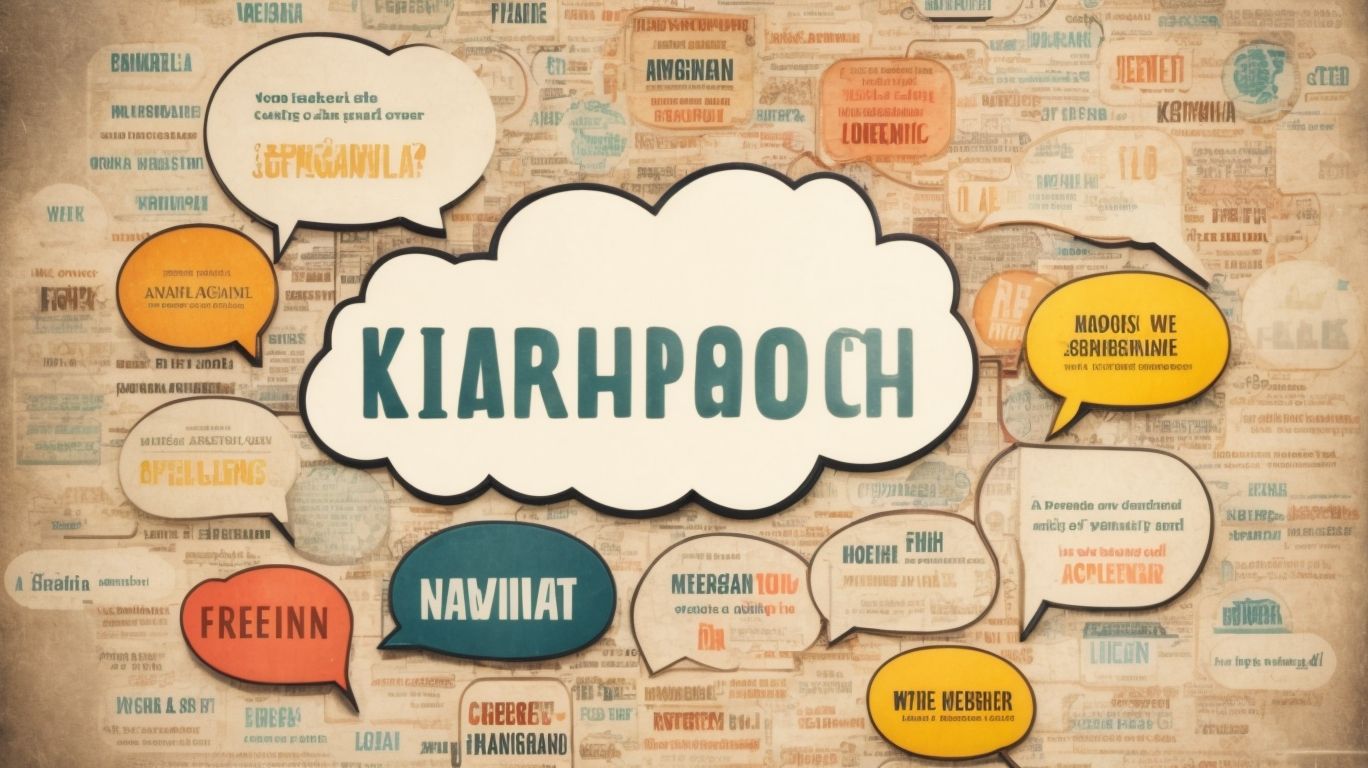Language acquisition is a fascinating process that every human being goes through. From the theories that explain how we learn languages to the stages we go through in developing our linguistic abilities, there is a lot to unpack.
In this article, we will explore the behaviorist, innatist, and interactionist theories of language acquisition, as well as the different stages such as the prelinguistic and telegraphic stages. We will also delve into the factors that influence language acquisition and discuss how we can support and encourage this vital skill.
So, let’s dive into the psychology behind language acquisition and gain a deeper understanding of this fundamental aspect of human development.
Contents
- 1 What Is Language Acquisition?
- 2 What Are The Theories Of Language Acquisition?
- 3 What Are The Stages Of Language Acquisition?
- 4 What Are The Factors That Influence Language Acquisition?
- 5 How Can Language Acquisition Be Supported And Encouraged?
- 6 Frequently Asked Questions
- 6.1 What is the psychology behind language acquisition?
- 6.2 How do humans acquire language?
- 6.3 What is the role of nature vs. nurture in language acquisition?
- 6.4 How does the process of language acquisition differ between children and adults?
- 6.5 What are some common theories of language acquisition?
- 6.6 How does language acquisition impact cognitive development?
What Is Language Acquisition?
Language acquisition refers to the cognitive process through which children develop linguistic skills and proficiency in using speech to communicate.
Language acquisition is a complex journey that can be divided into several stages. The first stage is the prelinguistic stage, where infants mainly communicate through cries, gestures, and babbling. This is followed by the one-word or holophrastic stage, where children start using single words to convey meaning. The next stage, known as the telegraphic stage, involves stringing words together to form short phrases. Children reach the stage of complex sentences and full grammatical structures.
Various factors influence language acquisition in children. These include environmental factors such as exposure to language input, interaction with caregivers, and cultural context. Cognitive development plays a crucial role in shaping linguistic skills. Children’s innate abilities, such as pattern recognition and imitation, also contribute significantly to their language acquisition process.
What Are The Theories Of Language Acquisition?
Language acquisition theories encompass contrasting perspectives such as Noam Chomsky’s concept of Universal Grammar and behaviorist theories proposed by Skinner.
Chomsky’s renowned theories revolve around the idea that humans are biologically predisposed to learn language through innate structures in the brain, which is elucidated in his proposal of a Universal Grammar framework. According to Chomsky, children are equipped with a specialized language acquisition device that enables them to understand and produce language effortlessly.
On the other hand, behaviorist theories, championed by Skinner, emphasize the role of environmental stimuli and reinforcement in shaping language development. Skinner’s approach focuses on observable behaviors and the conditioning of responses through interactions with the environment.
Behaviorist Theory
The Behaviorist Theory of language acquisition, attributed to Skinner, emphasizes the role of operant conditioning and language-specific mechanisms in shaping linguistic development.
Operant conditioning, a key concept in Skinner’s Behaviorist Theory, suggests that language acquisition occurs through reinforcement and rewards based on an individual’s behavior. According to this theory, individuals learn language by interacting with their environment, receiving positive reinforcement for correct language usage and correction for mistakes. Through repeated exposure to these reinforcements, language skills are developed and refined over time.
Language-specific mechanisms refer to the unique cognitive processes that enable individuals to internalize grammar rules, vocabulary, and linguistic structures specific to their native language. These mechanisms play a crucial role in how language is acquired and used.
Innatist Theory
The Innatist Theory, championed by Chomsky, posits the existence of Universal Grammar and highlights the innate cognitive structures that facilitate language acquisition.
This theory suggests that humans are born with an inherent capacity for language, as evidenced by the uniformity in the way children acquire language across different cultures. Chomsky’s work played a pivotal role in the cognitive revolution within the field of linguistics, shifting the focus towards understanding the innate linguistic abilities that underpin our language capabilities. Universal Grammar, according to this theory, forms the foundation upon which all languages are built, providing a framework that guides language development in individuals.
Interactionist Theory
The Interactionist Theory of language acquisition emphasizes the role of interaction-based methods and explicit instruction in fostering cognitive functions related to linguistic development.
According to this theory, language learning occurs through social interactions and engagement with others, rather than just through individual study. It suggests that learners benefit significantly from interactive learning approaches that involve conversations, collaborative activities, and real-life communicative tasks. These interactions provide opportunities for learners to practice using the language in context, leading to enhanced language proficiency and fluency.
What Are The Stages Of Language Acquisition?
Language acquisition progresses through distinct stages including the prelinguistic stage, babbling stage, one-word stage, two-word stage, and telegraphic stage, each involving the development of syntax, phonology, and morphological structures.
During the prelinguistic stage, infants produce a variety of sounds that progressively approximate the sounds of their native language. This stage is crucial in laying the foundation for later language development.
The babbling stage marks a period when infants experiment with different speech sounds, paving the way for the formation of phonological representations.
One-word utterances emerge as infants begin to associate specific words with objects or actions, showcasing their growing understanding of vocabulary.
Prelinguistic Stage
The prelinguistic stage marks the initial cognitive processes and brain activity that set the foundation for language development, often considered within the context of the critical period hypothesis.
During this stage, infants engage in various nonverbal behaviors such as babbling, pointing, and gestures, all of which contribute to their early communication skills. These actions are closely linked to the development of neural mechanisms in the brain, particularly in regions that play a crucial role in language processing, like the Broca’s area and Wernicke’s area.
Researchers suggest that there is a specific window of time, known as the critical period, during which language acquisition occurs most easily and efficiently. This period is characterized by heightened neural plasticity, allowing infants to absorb linguistic input and mimic sounds with greater ease.
Babbling Stage
During the babbling stage, infants engage in phonological processing, exploring language sounds and patterns through experimentation, a phenomenon evidenced by the classic Wug Test and linguistic input variations.
At this critical stage of language development, infants demonstrate their innate ability to produce a wide range of sounds within the phonetic repertoire of their native language. This exploration not only involves individual phonemes but also the patterns and sequences in which these sounds occur. Through interactions with caregivers and exposure to spoken language, infants absorb linguistic input that serves as a blueprint for their own speech development. Linguistic stimuli such as parentese, the exaggerated and simplified speech commonly used by adults when interacting with infants, play a significant role in facilitating phonological awareness and imitation.
One-Word Stage
The one-word stage signifies the expansion of vocabulary and the engagement of neural mechanisms associated with early language processing, crucial for identifying potential issues like specific language impairment.
At this early stage, infants begin to acquire a repertoire of single words that serve as building blocks for their language development. Vocabulary growth during this crucial phase is not merely about the quantity of words but also about the conceptual depth and versatility of their meanings. Research suggests that neural activations play a significant role in this process, firing up connections in the brain as children link words to objects and actions. This phase sets the foundation for more complex language skills in the future, shaping their ability to communicate effectively and comprehend the world around them.
Two-Word Stage
The two-word stage introduces basic grammatical rules and syntactic structures into language usage, showcasing early attempts at forming meaningful phrases and sentences, with implications for assistive technology interventions.
During this stage, children typically exhibit significant progress in their understanding of linguistic structures through the combination of two words. This phase marks the beginning of their ability to convey more complex ideas and concepts using limited vocabulary. Basic syntactic patterns such as subject-verb or verb-object relationships start emerging, indicating a gradual grasp of fundamental grammar rules.
At this developmental stage, caregivers and educators play a crucial role in scaffolding language acquisition by reinforcing correct grammatical structures and expanding vocabulary through interactions and play-based learning activities.
Telegraphic Stage
The telegraphic stage demonstrates advanced cognitive functions in assembling coherent sentences while highlighting potential language disorders that may necessitate augmentative and alternative communication strategies.
During this stage, individuals typically begin combining words in a simplistic and efficient manner, marking a significant milestone in their linguistic development. Grammatical structures become more sophisticated, enabling them to convey complex ideas despite using shortened phrases.
It is important to note that certain language disorders might compromise this stage, affecting a person’s ability to construct meaningful sentences. In such cases, utilizing communication aids like picture boards, speech-generating devices, or sign language can offer a crucial assistive approach.
By understanding the challenges associated with language disorders, caregivers and educators can provide tailored support to enhance communication skills.
What Are The Factors That Influence Language Acquisition?
Language acquisition is influenced by a combination of biolinguistic mechanisms, environmental stimuli, and factors such as exposure to multilingual contexts, shaping linguistic development.
The biological aspect of language acquisition involves the brain’s capacity to process and analyze linguistic input, guiding the formation of speech patterns and vocabulary. Environmental influences, such as cultural immersion and social interaction, play a crucial role in language learning. Exposure to diverse language environments early in life can enhance cognitive flexibility and problem-solving skills, contributing to improved language proficiency across multiple languages.
Biological Factors
Biological factors underpinning language acquisition involve neural mechanisms within the brain, often studied through neuroimaging techniques to understand the intricate processes of linguistic development.
Neuroimaging technologies, such as functional magnetic resonance imaging (fMRI) and positron emission tomography (PET), enable researchers to observe brain activity during language tasks, offering insights into the areas of the brain responsible for language processing.
Studies have shown that Broca’s area, located in the frontal lobe, plays a crucial role in language production, while Wernicke’s area in the temporal lobe is associated with language comprehension. The intricate interplay between these regions highlights the complex neural networks involved in language processing and cognition.
Environmental Factors
Environmental factors play a crucial role in language acquisition, providing linguistic input that engages cognitive and executive functions necessary for robust linguistic development.
When a child is exposed to a rich and diverse linguistic environment, their brain mechanisms are activated to process and comprehend the intricacies of language. Cognitive engagement refers to the active participation and mental processing involved in decoding speech patterns, grammar rules, and vocabulary. This process stimulates neural connections and strengthens the foundation for language learning.
The involvement of executive functions like working memory, attention control, and inhibitory control in language acquisition is fundamental. Executive functions enable individuals to organize, plan, and monitor their language production, facilitating effective communication and comprehension.
Social Factors
Social factors contribute significantly to language acquisition through interactions, educational frameworks, and specialized language teaching methods that enhance linguistic learning experiences.
Interactions within social settings play a crucial role in language development, as individuals engage in conversations, discussions, and language exchanges that help them internalize vocabulary, grammatical structures, and speech patterns.
Educational environments, such as schools and language classes, provide structured opportunities for learners to practice speaking, listening, reading, and writing in a supportive context. Effective language teaching strategies, including communicative approaches, task-based learning, and immersion programs, actively involve students in meaningful language use, promoting fluency and proficiency.
How Can Language Acquisition Be Supported And Encouraged?
Facilitating language acquisition involves fostering activities such as reading, writing, and engaging cognitive functions that promote linguistic development and proficiency.
One of the key strategies to support language acquisition is through extensive reading. Encouraging individuals to explore a variety of texts, from articles and novels to academic papers and poetry, can significantly enhance vocabulary and comprehension skills.
Writing exercises play a crucial role in language development by allowing learners to practice grammar, syntax, and creativity. Incorporating activities that stimulate cognitive engagement, such as puzzles, word games, and dialogues, not only strengthens linguistic abilities but also enhances critical thinking and problem-solving skills.
Exposure To Language
Exposing individuals to diverse linguistic stimuli enhances speech development and activates cognitive processes within the brain essential for language acquisition.
When individuals are exposed to a variety of languages, it triggers neural activations that are crucial for processing and understanding linguistic patterns. This exposure not only fosters the development of phonetic and grammatical skills but also strengthens connections in the brain that are responsible for language comprehension.
- Language exposure plays a significant role in shaping the plasticity of the brain, allowing for greater adaptability and efficiency in language learning.
Research has shown that early and consistent exposure to different languages can lead to improved cognitive functions such as problem-solving, attention span, and multitasking abilities. This linguistic stimulus aids in the formation of neural pathways that support language acquisition and processing.
Interaction And Communication
Interactive communication fosters neurolinguistic connections, strengthens conceptual understanding, and supports the development of bilingualism, enriching language acquisition experiences.
When engaging in interactive communication, individuals have the opportunity to actively process and internalize linguistic patterns, leading to more efficient learning as the brain forms connections between sounds, words, and meanings. This process taps into the neurolinguistic aspects of language acquisition, which involve the brain’s ability to interpret and produce language. Through interactive exchanges, learners not only enhance their vocabulary and grammar but also gain a deeper understanding of cultural nuances and contextual usage, fostering a more comprehensive grasp of the target language.
Reading And Writing
Engaging in reading and writing activities enhances vocabulary acquisition, refines syntactic skills, and may aid in identifying language-related disorders requiring specialized interventions.
Reading and writing serve as fundamental pillars in the development of language skills. Literacy skills are vital for communication, cognitive growth, and academic success. Through exposure to diverse texts and contexts, individuals enrich their lexicon with nuanced expressions and terminology. Practicing writing nurtures the intricacies of sentence structures and grammar rules.
The act of reading can unveil signs of potential language disorders in individuals, prompting early detection and intervention. These disorders, such as dyslexia or expressive language disorder, can impede verbal and written communication. Tailored therapies and educational strategies can address these challenges and enable individuals with essential linguistic skills.
Multilingualism
Embracing multilingualism promotes cognitive flexibility, enriches educational experiences, and may offer benefits in addressing language impairments and disorders through specialized educational approaches.
One of the key advantages of multilingualism is the enhancement it brings to cognitive abilities. Studies have shown that individuals who speak more than one language exhibit improved problem-solving skills, better multitasking abilities, and enhanced decision-making processes. This cognitive advantage is attributed to the constant mental exercise that occurs when switching between languages, leading to greater overall brain function.
In the realm of education, multilingualism opens doors to a wider array of learning opportunities. Students proficient in multiple languages have access to a broader range of resources, cultural perspectives, and academic content. This exposure not only enriches their educational journey but also fosters a deeper understanding and appreciation for diverse worldviews.
Moreover, when it comes to language disorders and impairments, multilingualism can be a valuable asset in therapy and intervention programs. Being bilingual or multilingual can provide alternate pathways for language expression and comprehension, offering individuals with language difficulties unique strategies for language acquisition and communication. Specialized educational approaches that leverage a person’s multilingual abilities can significantly improve outcomes in language disorder treatment.”
Frequently Asked Questions
What is the psychology behind language acquisition?
The psychology behind language acquisition refers to the mental processes that contribute to the development of language skills in humans. It involves understanding how the brain processes language, how children learn language, and how different factors such as environment and culture impact language acquisition.
How do humans acquire language?
Humans acquire language through a complex process that involves both biological and environmental factors. The brain is naturally wired for language, but exposure to linguistic input from caregivers and interactions with others is crucial for the development of language skills.
What is the role of nature vs. nurture in language acquisition?
Nature and nurture both play important roles in language acquisition. While humans have a natural predisposition for language, the environment and social interactions also heavily influence the development of language skills. Children who are exposed to more language input and have more opportunities for communication tend to acquire language more quickly.
How does the process of language acquisition differ between children and adults?
The process of language acquisition differs between children and adults. Children have a “critical period” for language development, where their brains are most receptive to language input. This period ends around puberty, after which language acquisition becomes more difficult. Adults also have more developed cognitive and linguistic abilities, which can impact their approach to learning a new language.
What are some common theories of language acquisition?
Some common theories of language acquisition include the behaviorist theory, which suggests that language is learned through reinforcement and imitation; the nativist theory, which proposes that humans have an innate capacity for language; and the interactionist theory, which combines both nature and nurture factors in language development.
How does language acquisition impact cognitive development?
Language acquisition is closely linked to cognitive development. As children learn language, they also develop important cognitive skills such as problem-solving, memory, and creativity. Language skills also play a crucial role in other aspects of cognitive development, such as social and emotional development and academic achievement.




